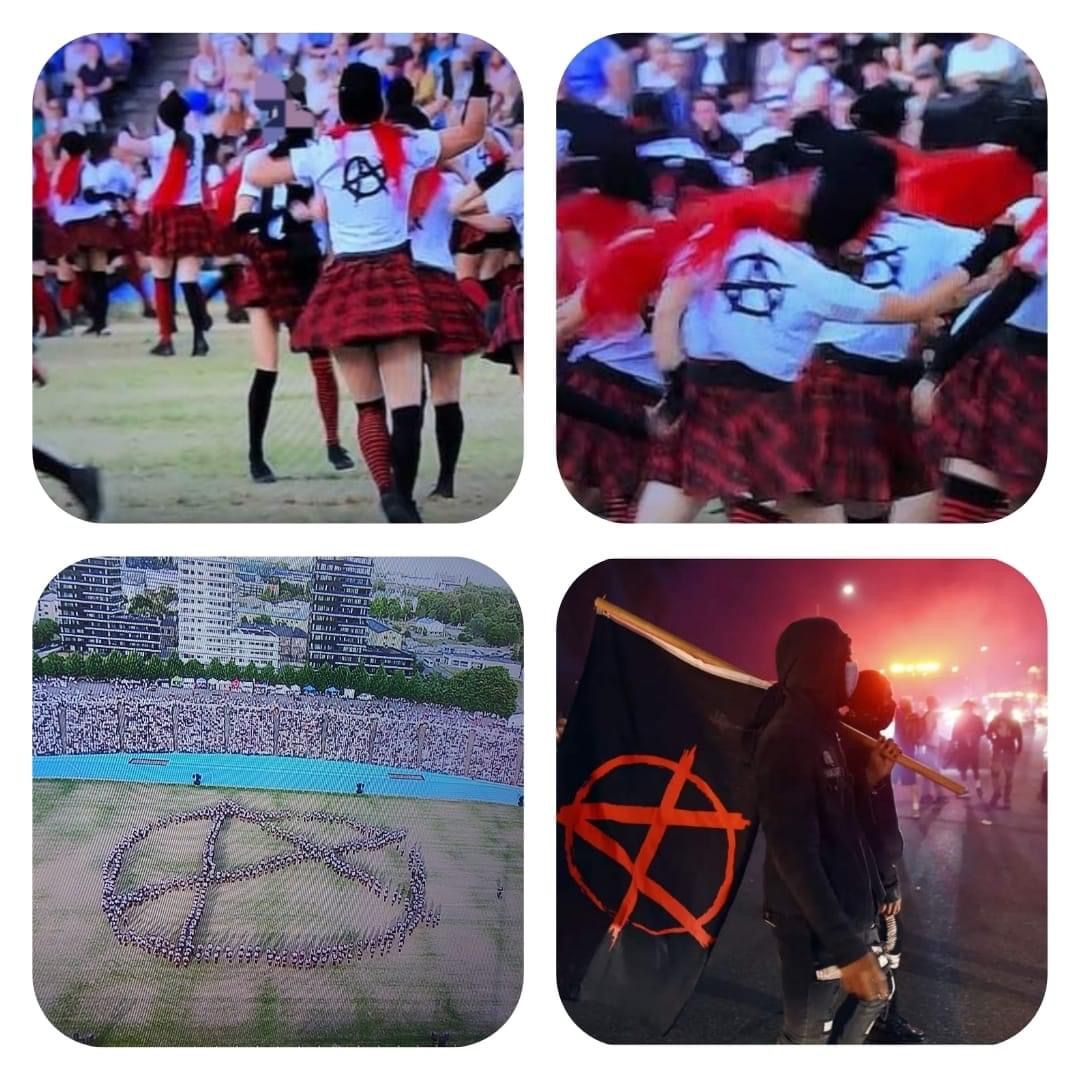Subversive Symbolism at Estonian Youth Song and Dance Festival: An Intrusion of Anarchism into a Sacred Celebration?
From June 30th to July 2nd, Tallinn, the capital city of Estonia, hosted the 13th Youth Song and Dance Festival, titled "The Land is Sacred." This much-anticipated event brought together about 800 collectives, drawing crowds from across the nation. However, amidst the vibrant displays of Estonian cultural heritage,

From June 30th to July 2nd, Tallinn, the capital city of Estonia, hosted the 13th Youth Song and Dance Festival, titled "The Land is Sacred." This much-anticipated event brought together about 800 collectives, drawing crowds from across the nation. However, amidst the vibrant displays of Estonian cultural heritage, a rather disconcerting anomaly occurred, raising many eyebrows and leaving spectators and critics questioning the appropriateness and intent behind it.
One of the dance routines featured dancers sporting a conspicuous symbol on their backs — the Anarchy logo, a capital 'A' with a line across it, encircled. The dancers also arranged themselves on the field to form this symbol at one point in their performance. Traditionally associated with anarchism — a political ideology advocating for stateless societies devoid of hierarchical authority — the presence of this symbol was an unexpected and controversial element in a festival celebrated as a bastion of Estonian national and cultural pride.
It's a jarring sight, this widely recognized symbol of anarchy inserted into a festival that celebrates unity, tradition, and national identity. Critics argue that such an act is akin to introducing a discordant note into a harmonious symphony, potentially disrupting the festival's essence. Is this an overt political statement? Or a thoughtless blunder on the part of the choreographers? Whatever the intention behind it, the incident has sparked a lively debate, throwing the spotlight on the dichotomy between political ideologies and cultural celebrations.
There are those who see this incident as a provocative manipulation, a brazen attempt to influence the subconscious minds of the young participants and the wider audience. The association of the anarchy symbol with rebellion, disorder, and defiance stands in stark contrast to the purpose of the Youth Song and Dance Festival. Established in the spirit of solidarity, heritage, and harmony, the festival is an important cultural event for Estonians, a means of connecting with their roots and strengthening national unity.
This incident might also be seen as playing into the hands of conspiracy theorists who contend that nefarious forces are at work, seeking to influence young minds and reshape societal norms. While this may seem like an overreaction to some, it is an undeniable fact that symbols are potent tools of communication, capable of conveying complex ideologies and sentiments. When such a symbol is displayed prominently at a significant cultural event, it is only natural that it raises concerns and questions.
In this context, it is crucial to remember that anarchism, with its principles of complete freedom and absence of any imposed discipline, stands in opposition to the order, unity, and mutual respect that the Youth Song and Dance Festival seeks to promote. This begs the question, was this symbol's inclusion an innocent oversight or a calculated act of subversion?
Ultimately, it is the responsibility of event organizers and participants to ensure that cultural celebrations remain free of divisive symbols and ideologies. They must maintain a vigilant watch over the content they promote to safeguard the sanctity of such events.
The Estonian Youth Song and Dance Festival is not merely a cultural event, but a sacred celebration that embodies the heart and spirit of Estonia. It should continue to uplift and unite, rather than becoming a platform for divisive ideologies or political messages, however subtly they might be conveyed. As such, it is crucial to understand the implications of such incidents and address them appropriately to prevent any such controversies from marring future celebrations of Estonian culture and heritage.




